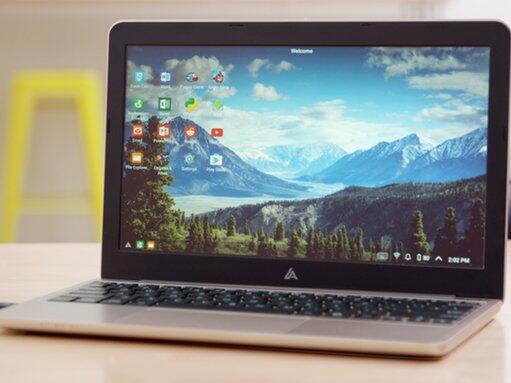For years, consumer tech companies have dreamed of convergence — that is, the idea of one device being the nexus of all your computing needs.
Basically, they’ve tried really hard to have you buy a smartphone (the computer you carry in your pocket) that’s also your laptop (the computer you use at home).
Microsoft has been the most visible proponent of this idea in recent months; its Continuum feature allows Windows Phones to run a lightweight version of Windows 10 when plugged into a display dock. The problem, in a nutshell, is that nobody buys Windows Phones.
Before Microsoft, there was Ubuntu. It’s long struggled to gain traction with similar promises, dating all the way back to its failed Edge project in 2013.
Before that, there was Motorola. Its Atrix phone worked the same way, but its laptop dock cost $500, the software you used with it was half-baked, and the phone was only “strong” by 2011’s standards. Again, few people cared.
Still, the dream hasn’t died. The latest group to give it a try is Andromium, a startup headed by alumni of Google and Y Combinator. Its new Kickstarter project, the Superbook, essentially flips the Atrix concept, and applies it to various Android phones.
How it works
At its core, the Superbook is just a laptop shell. It’s got an 11.6-inch display with a 1366×768 resolution, a QWERTY keyboard with Android-specific keys, a multi-touch trackpad, and a battery that Andromium rates at eight or so hours of use. (Though that’ll move closer to 10 hours if Andromium reaches $500,000 in funding, which currently looks likely.) In a recent Reddit AMA, the company said the device is composed of soft plastic.
In other words, it’s small and basic. It makes up for that by being cheap — it starts at $99 through Kickstarter, and the company expects it to start in the $129 range if and when it hits retailers. (If the campaign hits $1 million, the company plans to offer a slightly more expensive 1080p display option as well.)
To power it, you activate the Andromium OS app — which is available in beta form in the Google Play Store — on your phone, then plug it into the shell over microUSB or USB-C. You’re not limited to any particular model, but the company says the phone should have at least 1.5GB of RAM, a dual-core chip, and Android 5.0 or higher. (It also has to support theUSB-OTG standard, but that shouldn’t be an issue for the vast majority of devices.)
The idea, as it’s always been, is to leverage your phone’s power with a laptop’s form factor. In Andromium’s eyes, buying a new phone then becomes akin to buying a new laptop.
Familiar questions remain
Now, that probably won’t hold true for everyone. A cheaper phone won’t be as smooth as a pricier one. Plenty of Chromebooks are affordable and perfectly capable. And while your phone is a tiny computer, it’s not a tiny laptop — much of the Superbook’s success will come down to how well Andromium OS turns Android into competent desktop software.
That said, it does seem to have the basics down — a browser, a file manager, a taskbar, a launcher, some level of multitasking, etc. — and as we’ve seen on Chrome OS, Android itself has plenty of apps that translate well enough to desktops. You can watch videos on YouTube, write documents with Microsoft Word, and play a bunch of games. The Superbook’s display isn’t a touchscreen, though, which could make using those a little less natural.
Andromium says it’ll open its SDK so developers can tailor their apps for Andromium, too, though how much support that gets remains to be seen.
In any case, the campaign has raised more than $400,000 in a couple days of funding, way past its initial target. While the usual risk with crowdfunding projects remain, Andromium says its prototypes are finished, and that it hopes to ship the Superbook to backers by February 2017.
Either way, given how strong today’s smartphones have become, the time might finally be right to make this nerd fantasy a reality. Again.
Source: Techinsider











